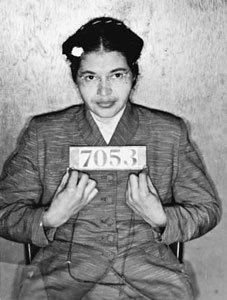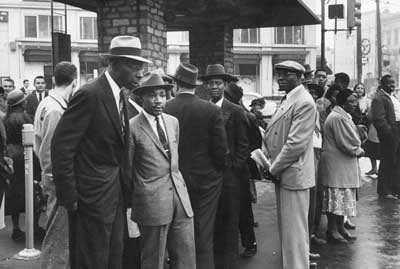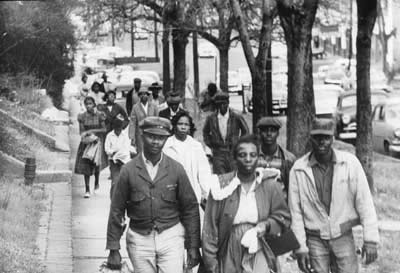The Montgomery Bus Boycott
A year after the Brown v. Board of Education decision, the focus of the civil rights campaign shifted to Montgomery, Alabama. View the following galleria to learn about the bus boycott in that city.
In 1957, a watered down civil rights bill was passed, but it was weak and voting rates among African Americans remained below twenty percent. In 1964, after much arm twisting and a lengthy filibuster, Congress passed a comprehensive civil rights bill.
The Civil Rights Act of 1964 was actually a stronger measure than the bill proposed by either party, primarily because it had significant enforcement mechanisms. Johnson quipped to an aid that the Democrats would face a backlash against their party that would lose them elections for the next generation. The legislation included the following provisions:
- Banned racial discrimination in all public accommodations (e.g., restaurants, hotels, theaters, stores, etc.).
- Required the federal government to cease funding of any state or local program that had discriminatory policies.
- Authorized the Justice Department to file lawsuits to enforce school desegregation.
- Created the Equal Employment Opportunities Commission to force businesses and labor unions to comply with anti-discrimination laws.
![]() Journal:1964 Civil Rights Act 10 points
Journal:1964 Civil Rights Act 10 points
Explore these links and then answer the journal questions.
Journal Questions:
What were the influences that led to passage of civil rights laws? What factors resulted in the passage of the 1964 Civil Rights Act?
Please enter your entry to The 1964 Civil Rights Act Journal on the journal worksheet for this section. For information on how this assignment will be graded, please visit the Orientation.











![Explore: CongressLink: [Congress: The Basics - Lawmaking] Civil Rights: Major Features of the Civil Rights Act of 1964](resources/images/2_B_15_explore2.jpg)